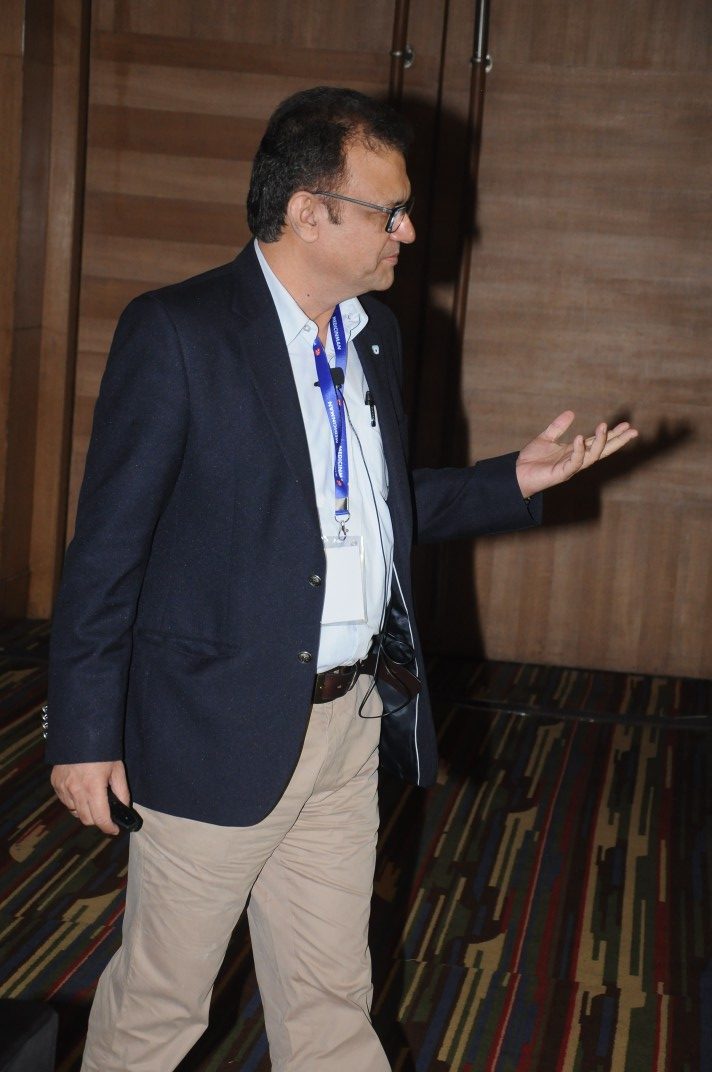Hot topics
Healthcare Disruption – Will Ola, Swiggy, Pharmaeasy, and Hospitals Converge to Deliver Health Care on Call at Your Doorstep?
How long before digital Unicorns like Ola, Swiggy, Pharmeasy, and many others realize the humongous opportunity of delivering health care at the doorstep?
Imagine an app like Ola, where instead of entering where you want to go, you enter the nature of your medical need/emergency and search and find a range of hospitals/doctors/paramedics who can act as the first responders and reach your home in an ambulance or a motorbike with an HCP as a pillion rider with all necessary equipment from the thermometer to defibrillator depending on the nature of the medical care needed and triage and route you/your loved ones to the nearest hospital with an indicative cost of treatment in partnership with health insurance companies?
IMS Health Market Reflection Report for June 2016
Every month, MedicinMan in partnership with IMS Health, brings our readers the latest industry numbers related to sales and revenues of different companies, brands and therapy areas in the Indian Pharmaceutical Market.
How to Harness the Power of Omnichannel Marketing in the Pharma Industry
Pharmaceutical & medical devices Industry is fast adapting to these changes at various levels of the value chain. Billions of dollars are being spent on digital transformation projects ranging from usage of AI & ML in product development, production and predictive maintenance, Blockchain in supply chain and data management & analytics in strategic decision making.
This article focuses on Omnichannel marketing, one of the key digital transformations that the industry is learning and implementing at a rapid pace.
Omnichannel Marketing: Promise and Possibilities
An industry that historically focused all their brand building and market shaping efforts through F2F meetings & medical education programs has started making giant strides in multi-channel strategy now.
A digital journey that started with an e-detailing platform has progressed fast by adding brand websites, Approved E-Mails, social media, webinars and other media effectively creating a multi-channel strategy. The only hindside to this is, all these channels work independently, expecting HCPs to find and sort out information themselves.
Consumer Experience in Pharmaceutical Industry
A wholesome view of the brand shapes a customer’s...
MedicinMan Indian Pharma Digital Adoption Survey
Smaller Indian pharma companies bore the strongest impact from...
Top 25 Indian Pharma Companies by Revenues in 2024
India pharma is crucial for global healthcare, providing affordable...
Top 10 Indian Pharma – 2025
India's top 10 pharma companies by market capitalization, offering insights into...
Antibody-Drug Conjugates (ADCs): The Disruptors Leading Oncology’s Gold Rush in 2025
1. Market Overview
The oncology sector remains the most dominant...
FLUX – Indian Pharma in the Post VUCA World
Introduction
For decades, leaders and organizations have relied on the...
Top 25 Indian Pharma Companies by Revenues in 2024
India pharma is crucial for global healthcare, providing affordable...
Top 10 Indian Pharma – 2025
India's top 10 pharma companies by market capitalization, offering insights into...
Antibody-Drug Conjugates (ADCs): The Disruptors Leading Oncology’s Gold Rush in 2025
1. Market Overview
The oncology sector remains the most dominant...
FLUX – Indian Pharma in the Post VUCA World
Introduction
For decades, leaders and organizations have relied on the...
Top 25 Indian Pharma Companies by Revenues in 2024
India pharma is crucial for global healthcare, providing affordable...
Top 10 Indian Pharma – 2025
India's top 10 pharma companies by market capitalization, offering insights into...
Antibody-Drug Conjugates (ADCs): The Disruptors Leading Oncology’s Gold Rush in 2025
1. Market Overview
The oncology sector remains the most dominant...
FLUX – Indian Pharma in the Post VUCA World
Introduction
For decades, leaders and organizations have relied on the...
Top 25 Indian Pharma Companies by Revenues in 2024
India pharma is crucial for global healthcare, providing affordable...
Top 10 Indian Pharma – 2025
India's top 10 pharma companies by market capitalization, offering insights into...
Antibody-Drug Conjugates (ADCs): The Disruptors Leading Oncology’s Gold Rush in 2025
1. Market Overview
The oncology sector remains the most dominant...
FLUX – Indian Pharma in the Post VUCA World
Introduction
For decades, leaders and organizations have relied on the...
Hot topics
The Pill is Now a Commodity – Can ‘Beyond the Pill’ Models Work in India?
The pill is now a commodity that many of these companies provide at heavy discounts, making money off everything ‘beyond the pill’. Investors are betting heavily on the potential of technological innovation to transform the way healthcare is delivered.
The Economic Times reported that in 2021, India recorded investments of $77 billion across 1,266 deals including 164 large deals worth $58 billion. While the money reduced in 2022, the reason wasn’t a lack of faith in this business model.
Meanwhile, the pharmaceuticals industry that is most affected by this quiet but rapid change, is grappling with its entrenched culture. Its current business is so profitable that everything else pales in comparison.
‘Build, measure, learn, build again’ – a mantra of the health tech industry is alien to pharma that doesn’t learn, build or measure after launching a product.
Pharma also thinks of its customers as doctors alone and does precious little to connect with patients, or caregivers. People who are not sick do not feature on their radar at all. These are cultural values that keep pharma focused on the pill and discourage thinking beyond it.
A social media poll conducted by MedicinMan showed almost predictable responses. 100+ respondents who work in the pharma industry in India were quite clearly divided. 48% of them wanted to know what beyond the pill actually meant, while 23% wanted to know how to execute it.
The rest felt that the ultra-competitive environment in the Indian generics market required very high share-of-voice tactics (19%), or that their customers demanded product information (9%).
Astra Zeneca Tops Indian Pharma in New Introductions 2024
Analysis of Indian Pharmaceutical Market (IPM) – 2024
This data...
What about Indian Pharma?
Articles by K. Hariram, Vivek Hattangadi, Soham Wagh, Dr. Rajshri Jobanputra, and Rashesh Patel
IMS Health Market Reflection Report for September 2016
The Indian Pharmaceutical Market (IPM) was valued at Rs. 10,278 crs in the month of September 2016 clocking a strong 10% growth over same period last year (SPLY). On a MAT September basis, the industry was valued at Rs. 111,022 crores and reflected a 13% growth with volumes contributing around 40% of this growth and New Introductions playing an important role with around 38% contribution to the overall growth.
Top 25 Indian Pharma Companies by Revenues in 2024
India pharma is crucial for global healthcare, providing affordable...
Top 10 Indian Pharma – 2025
India's top 10 pharma companies by market capitalization, offering insights into...
Antibody-Drug Conjugates (ADCs): The Disruptors Leading Oncology’s Gold Rush in 2025
1. Market Overview
The oncology sector remains the most dominant...
FLUX – Indian Pharma in the Post VUCA World
Introduction
For decades, leaders and organizations have relied on the...
Top 25 Indian Pharma Companies by Revenues in 2024
India pharma is crucial for global healthcare, providing affordable...
Top 10 Indian Pharma – 2025
India's top 10 pharma companies by market capitalization, offering insights into...
Antibody-Drug Conjugates (ADCs): The Disruptors Leading Oncology’s Gold Rush in 2025
1. Market Overview
The oncology sector remains the most dominant...
FLUX – Indian Pharma in the Post VUCA World
Introduction
For decades, leaders and organizations have relied on the...
Top 25 Indian Pharma Companies by Revenues in 2024
India pharma is crucial for global healthcare, providing affordable...
Top 10 Indian Pharma – 2025
India's top 10 pharma companies by market capitalization, offering insights into...
Antibody-Drug Conjugates (ADCs): The Disruptors Leading Oncology’s Gold Rush in 2025
1. Market Overview
The oncology sector remains the most dominant...
FLUX – Indian Pharma in the Post VUCA World
Introduction
For decades, leaders and organizations have relied on the...
Top 25 Indian Pharma Companies by Revenues in 2024
India pharma is crucial for global healthcare, providing affordable...
Top 10 Indian Pharma – 2025
India's top 10 pharma companies by market capitalization, offering insights into...
Antibody-Drug Conjugates (ADCs): The Disruptors Leading Oncology’s Gold Rush in 2025
1. Market Overview
The oncology sector remains the most dominant...
FLUX – Indian Pharma in the Post VUCA World
Introduction
For decades, leaders and organizations have relied on the...
MedicinMan was launched in 2011 as India’s 1st Magazine dedicated to the cause of Field Force Excellence in Pharma and Devices.
Read More
Headlines
Top 25 Indian Pharma Companies by Revenues in 2024
India pharma is crucial for global healthcare, providing affordable...
Top 10 Indian Pharma – 2025
India's top 10 pharma companies by market capitalization, offering insights into...
Antibody-Drug Conjugates (ADCs): The Disruptors Leading Oncology’s Gold Rush in 2025
1. Market Overview
The oncology sector remains the most dominant...
Newsletter
Get important news delivered directly to your inbox and stay connected!




